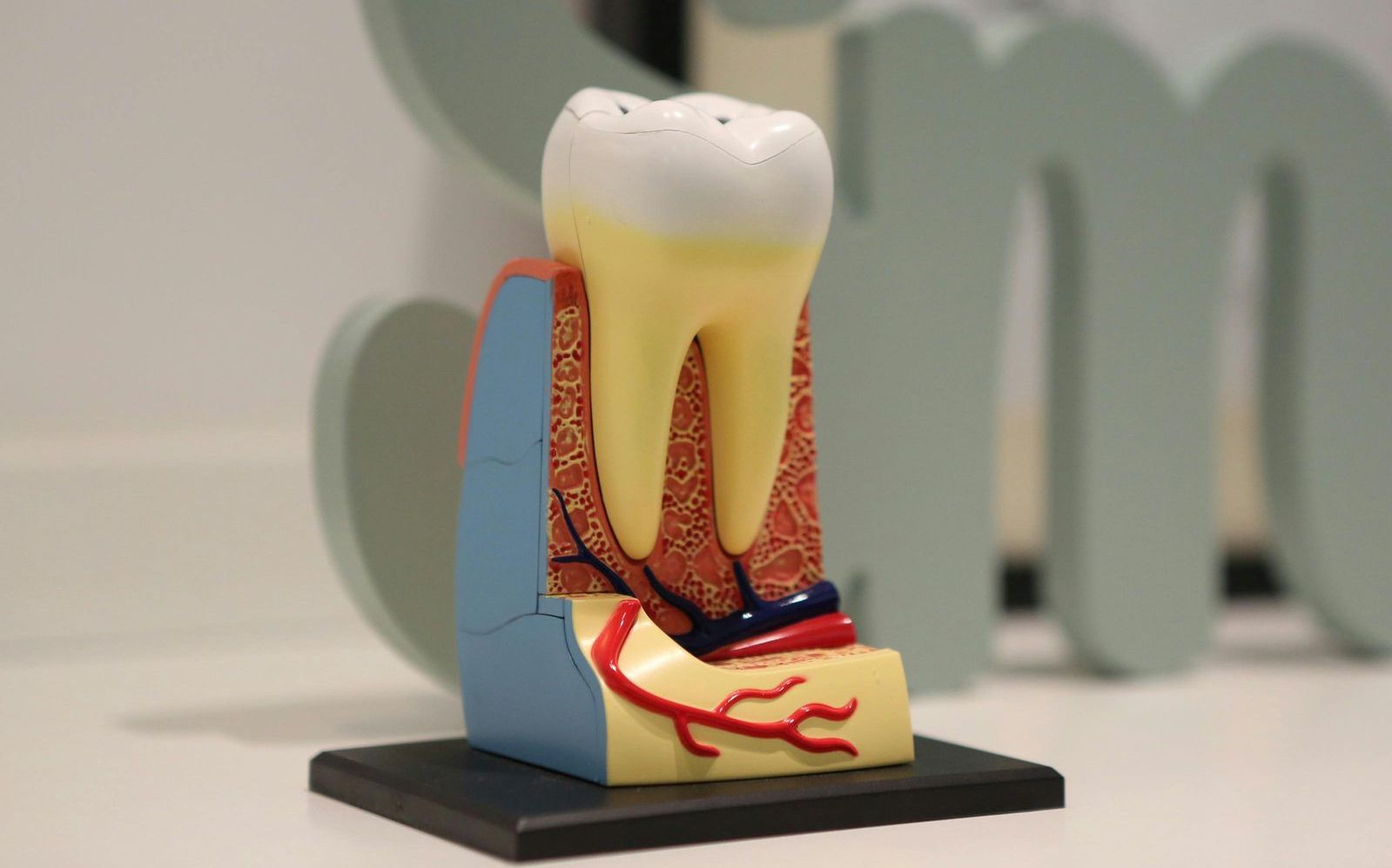Oil Pulling: An Ancient Remedy for Modern Oral Health?
In recent years, oil pulling has gained popularity, largely thanks to social media influencers who document their experiences with the practice. While the trend is relatively new in the public eye, oil pulling itself is far from a modern phenomenon.

Originating thousands of years ago in ancient India, oil pulling was used as a natural remedy to improve oral health by whitening teeth, freshening breath, and reducing the buildup of harmful bacteria in the mouth. In today’s world of modern medicine and advanced dental care, oil pulling is seen as a homeopathic approach to maintaining oral hygiene, one that avoids the synthetic ingredients commonly found in mass-market products. But does it actually work? Let’s dive into the history, practice, and potential benefits of oil pulling to find out whether it’s a valuable addition to your daily dental routine.
The History of Oil Pulling: An Ancient Indian Remedy
Oil pulling is not a new concept. It has deep roots in Ayurvedic medicine, a system of traditional medicine that dates back over 3,000 years in India. In Ayurveda, oil pulling was practiced as a way to balance the body’s elements, reduce toxins, and improve overall health. This method was thought to purify the body by pulling impurities from the mouth and helping detoxify the bloodstream, thus supporting overall wellness.
While the primary focus was oral health, oil pulling was also believed to support general well-being by stimulating the production of saliva, which contains enzymes that assist with digestion and immunity. Over time, the practice evolved into an important part of daily hygiene in some cultures.
How Does Oil Pulling Work?
The process of oil pulling is simple, yet effective. To begin, you place about one tablespoon of oil into your mouth. Popular oils for this practice include olive oil, coconut oil, sesame oil, and sunflower oil. While any oil can technically be used, coconut oil is often favored for its mild taste, natural antimicrobial properties, and the added benefit of being rich in antioxidants.
Once the oil is in your mouth, you gently swish it around, making sure it coats your teeth, gums, and the roof of your mouth. You should aim to do this for 15-20 minutes, swishing and pushing the oil through the gaps between your teeth and all around your mouth. It’s best to perform oil pulling first thing in the morning on an empty stomach, as this maximizes the effect of the oil on bacteria and plaque buildup.
After 15-20 minutes, you should spit the oil out into the garbage. It’s crucial not to spit it into the sink, as the oil can solidify and cause a clog over time. It’s also important to avoid swallowing the oil, as it will have absorbed bacteria and impurities from your mouth during the process.
Once the oil is out, you should follow up with brushing your teeth to ensure that any remaining bacteria and oil residue are thoroughly cleaned from your mouth.
Why Oil Pulling?
The main idea behind oil pulling is that the oil helps to remove harmful bacteria, plaque, and other debris from the teeth and gums, promoting a healthier mouth. During the swishing process, the oil mixes with saliva and is believed to "pull" bacteria from the mouth. The act of swishing also stimulates the production of saliva, which helps to neutralize acids in the mouth and supports overall oral health.
Most importantly, oil pulling provides a more natural alternative to chemical-laden mouthwashes and oral care products. This has made it a popular option for those looking to avoid artificial additives, preservatives, and sweeteners commonly found in commercial dental products.
The Oils Used in Oil Pulling
While the process itself remains the same, the type of oil you choose can vary. Here's a quick look at the most popular oils used in oil pulling and the benefits associated with each:
- Coconut Oil: Known for its antimicrobial properties due to the presence of lauric acid, coconut oil is a favorite among those practicing oil pulling. Its mild taste and soothing texture make it easy to swish around the mouth. Studies have shown that coconut oil can reduce levels of Streptococcus mutans, a bacteria associated with tooth decay.
- Olive Oil: Olive oil is another popular choice due to its anti-inflammatory and antioxidant properties. It also has the added benefit of being rich in vitamins and minerals that support oral and overall health.
- Sesame Oil: Traditional Ayurvedic medicine often recommends sesame oil for oil pulling. It's known for its antibacterial properties and high vitamin E content, which helps to promote gum health.
- Sunflower Oil: Like sesame oil, sunflower oil is a natural choice for oil pulling. It’s a mild option and contains vitamin E, which contributes to healthier gums and teeth.
Oil Pulling and Its Potential Benefits
Oil pulling, as mentioned earlier, is a practice with ancient roots, and modern enthusiasts claim a range of benefits. But do these benefits hold up under scientific scrutiny? While there is still limited research on the long-term effects of oil pulling, early studies suggest that it may indeed offer some advantages for oral health.
1. Reduction in Oral Bacteria
Several studies have found that oil pulling can reduce the presence of harmful bacteria in the mouth, including Streptococcus mutans, which is closely linked to tooth decay and cavities. Research published in the Journal of Clinical and Diagnostic Research found that oil pulling with coconut oil resulted in a significant reduction in the number of bacteria in the mouth after just two weeks of regular use.
2. Gum Health
Oil pulling may also support healthier gums. The practice of swishing oil around in your mouth helps stimulate the production of saliva, which contains enzymes that aid in the healing of irritated or inflamed gums. Some people have reported improvements in gum health after incorporating oil pulling into their daily routine.
3. Fresh Breath
Because oil pulling reduces bacteria in the mouth, it can also help freshen your breath. By minimizing the growth of bacteria that cause bad breath (halitosis), oil pulling can leave your mouth feeling cleaner and fresher.
4. Alternative to Chemical Mouthwashes
Many over-the-counter mouthwashes contain alcohol, which can dry out the mouth and cause irritation, especially for those with sensitive oral tissues. Oil pulling provides a natural alternative that avoids these harsh chemicals, offering a gentler, more holistic way to maintain oral hygiene.
What Does Oil Pulling NOT Do?
Despite the positive findings in some studies, oil pulling should not be considered a miracle cure for all oral health issues. There is no significant evidence to suggest that oil pulling can whiten teeth in a way that is comparable to professional treatments or whitening products.
Additionally, while oil pulling can reduce the bacterial load in your mouth, it is not a substitute for professional dental care. It has not been shown to remove or treat infections, and it should not be used as a treatment for gum disease or other serious oral conditions.
Oil Pulling in Your Dental Routine
So, should you incorporate oil pulling into your daily oral hygiene routine? While it’s not a replacement for brushing and flossing, oil pulling can be a beneficial addition to your routine, especially if you are looking for a natural, homeopathic option to improve oral health.
It’s important to note that oil pulling is not a substitute for regular visits to your dentist. Professional cleanings, fluoride treatments, and check-ups are essential for maintaining optimal oral health. However, for those looking for a gentle, natural way to enhance their oral hygiene regimen, oil pulling can provide benefits in terms of bacterial reduction, fresher breath, and healthier gums.
The Verdict: Is Oil Pulling Right for You?
In conclusion, oil pulling is an ancient practice that can certainly play a role in promoting oral health when used alongside regular brushing and flossing. While more research is needed to fully understand its long-term effects, current studies show that oil pulling may offer benefits such as reducing bacteria in the mouth and promoting gum health. However, it should not be relied upon as the sole method for maintaining oral hygiene or treating dental problems.
If you're considering trying oil pulling, it’s always a good idea to consult with your dentist first to ensure it's a safe and beneficial addition to your routine. Whether you choose coconut oil, sesame oil, or any other oil, make sure to follow the process correctly, and continue to maintain a comprehensive dental care routine that includes regular brushing, flossing, and professional cleanings.
Next time you’re in for your dental cleaning, be sure to ask your dentist about their thoughts on oil pulling and whether it could be a good fit for you. They can provide personalized advice based on your oral health needs and help guide you toward the best options for a healthy smile.
Copyright © Dr. Annie Mazure-Schmidt
Subscribe To Our Blog






